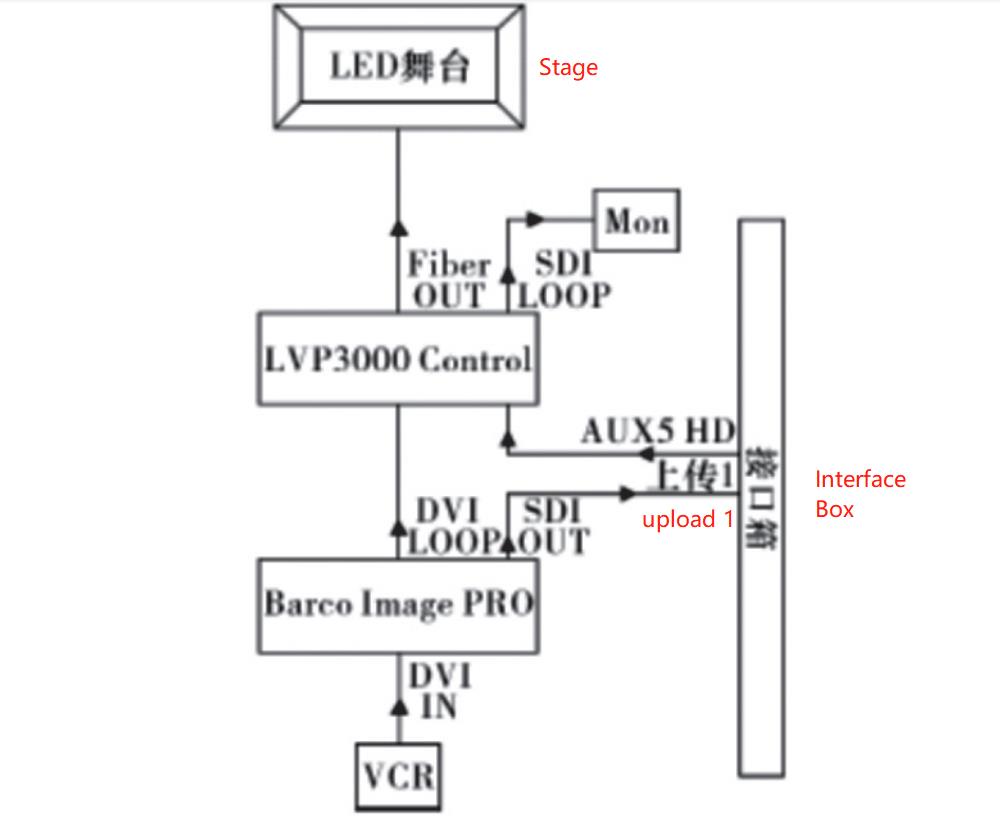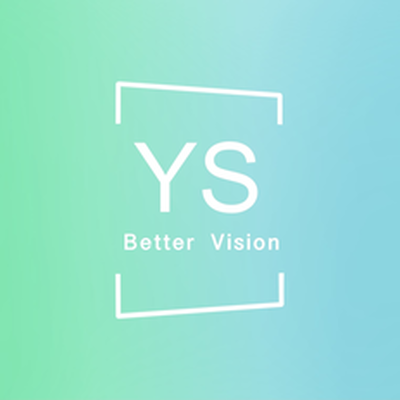Categories
Tags
Archives
Blogs » Shopping » LED Displays In HD Studios-1
LED Displays In HD Studios-1
-
In recent years, with the continuous improvement of China's technological level, the development of all walks of life has become faster and faster. Nowadays, the application of LED displays in HD studios is becoming more and more common, and it has become an important direction for the development of TV programs.
Compared with traditional TV program display equipment, LED displays have the advantages of rich colors, easy application, and the ability to flexibly adjust with the actual program type and screening needs. With the continuous development of the media industry in recent years, the variety of TV programs is getting richer and richer, and the presentation of TV programs also has a higher and higher demand, so the application of LED displays in the media industry is also getting more and more extensive. At the same time, with a large number of applications of LED displays, also exposed some significant problems, such as the "visual pollution" phenomenon being serious, can not accurately restore the color of the camera, and so on. Therefore, in the future development process, the relevant industries and enterprises must further enhance the application of LED displays, the effective handling of LED displays, and the relationship between the camera, and the LED display in the TV presentation effect to give full play to.
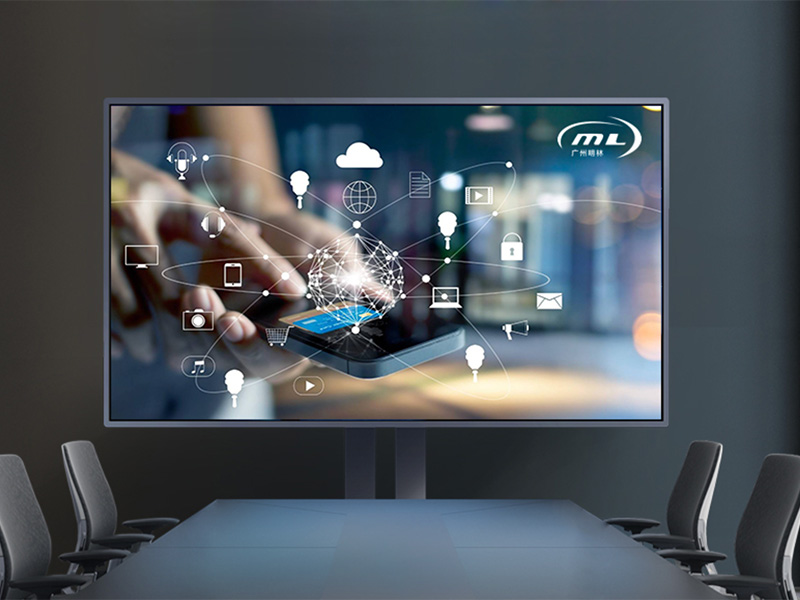
The Development And Application Of LED Displays
From the current stage of LED display application, its advantages mainly include two aspects: on the one hand, through the LED display can show a variety of media materials, such as video, images, etc., but also according to the needs of the program to achieve the split screen function; on the other hand, the application of LED display also has a strong virtual and flexible, not only can it display media materials, but also can act as Lighting equipment. [1] At present, many large HD studios use LED displays as scenery to show the content of the program, such as LED displays as background screens, circular moving screens, canopy, etc. In some small and medium-sized HD studios, LED screens are set up at different angles to realize the display of various media materials. It can be said that the application of LED display in HD studios has become a mainstream trend, and will be more popular in the future.
The Working Principle Of LED Display And Its Classification
(1) The Working Principle Of LED Display
LED is short for Light Emitting Diode, whose structure is mainly made of P-N structure. When the LED internal P-N junction of electrons and holes combined, electrons will achieve from high to low leap, accompanied by the release of energy, resulting in the phenomenon of light. LED light-emitting color is mainly determined by the elements contained in its material, GaAs emit red light, GaP emits green light, GaN emits blue.
LED displays are composed of pixels that display different colors, and different color chips are packaged in different ways to achieve different display functions. From the composition of an LED display, the smallest unit is a pixel, and several pixels will form a display module, which is combined with different circuits and mounting structures to form a display module, and then combined with chassis, fan, power supply, and other parts to form an LED display.
In general, from the principle point of view, the LED display light mainly relies on its internal P-N junction in the electron to achieve a high to low jump and release energy to achieve the light, and different materials are determined by the color of its light. People then combine the specific needs of different colors of light-emitting pixels to arrange the combination to achieve the display function. In addition, unlike other display devices, LED displays have strong modularity, in the actual use of the process requires the splicing of multiple boxes, so different splicing methods will have a direct impact on its display effect. Generally speaking, the smaller the seam between different boxes, the better the display effect will be.
(2) Classification Of LED Displays
From the point of view of the system components of the LED display, it mainly consists of two parts: the software system and the hardware system. Among them, the hardware system mainly refers to the chassis, power supply equipment, fans, monitors and computers, and so on.
In the process of selecting equipment for LED displays, various factors must be taken into account, such as electrical safety, maintenance difficulties, signal stability and the quality of television programs, and so on. In addition, at this stage, the input signal in the use of LED displays often has strong compatibility, from the use of LED displays can be divided into outdoor use, indoor use, and semi-outdoor use in three ways, according to the color can be divided into the monochrome display, dual color display, and three-color display, according to the pixel density can be divided into P2, P6 and P10, and other types. P6 and P10, etc. According to the LED display packaging is divided, is the LED display chip with insulating plastic or ceramic material packaging, so that the chip and the outside world isolation, in order to prevent air impurities corrosion chip circuit and cause electrical performance degradation, different packaging technology has produced different packaging methods, more commonly used LED display packaging methods DIP, SMD, COB, SIP, three in one, etc.
LED Display Application Strategies In Different Scenarios
From the current application scenario of LED display screens in HD studios of TV stations, mainly includes speech contests, variety shows, competition shows, and award parties. In different scenarios, LED display application strategies have certain differences. Therefore, this paper analyzes and discusses these common LED display scenarios, hoping to provide a reference for the future enhancement of LED display applications in HD studios.
In this example, all the external signal sources are converted by BARCO's Image PRO into the system or output to the LED display, and the console of the LED display takes the actual Jiestron LVP3000 or LVP2000 (without HD/SD SDI interface output) as an example, which have multiple VGA and DVI inputs, as well as fiber optic or network ports for DVI conversion to Other display consoles are more or less the same.
(1) The Application Of LED Display In The Speech Contest Class Program
In this type of scenario, it is often necessary to meet the needs of the participants' computers for external projection, so the operation desk can be set up near the LED display or near the lectern, which can be controlled by the participants themselves during the actual competition or arranged for the corresponding staff to be in charge. In terms of equipment preparation, long DVI cables are usually prepared to meet the long-distance connection between different computers; DVI cables are mainly used for computers on stage, while VGA or HDMI cables are used for computers off stage. In the connection process, after inputting the signals from the computers on stage and off-stage computers to Image PRO, the console of the LED display is connected through the loop, and then the monitor is connected through the SDI output of Image PRO so that the signal connection can be accurately grasped, and in case of connection errors, the wrong line can be quickly located, thus improving the connection The purpose of this is to accurately grasp the signal connection, and in case of connection errors, to quickly locate the wrong line, thus improving the connection efficiency.
When playing the opening and closing VCRs, a separate computer is needed to input the signal to another Image PRO, then switch out the loop-out signal to the console of the LED, and send the SDI output signal from the console and the SDI signal from the monitor loop-out to the interface box to upload into the system, so as to meet the work requirements of the guide switching recording.
In addition, the LED display on the stage and the LED display in the audience use the same signal source, but there are some differences in the connection method, the application of led display in the speech contest class program as shown in figure1.
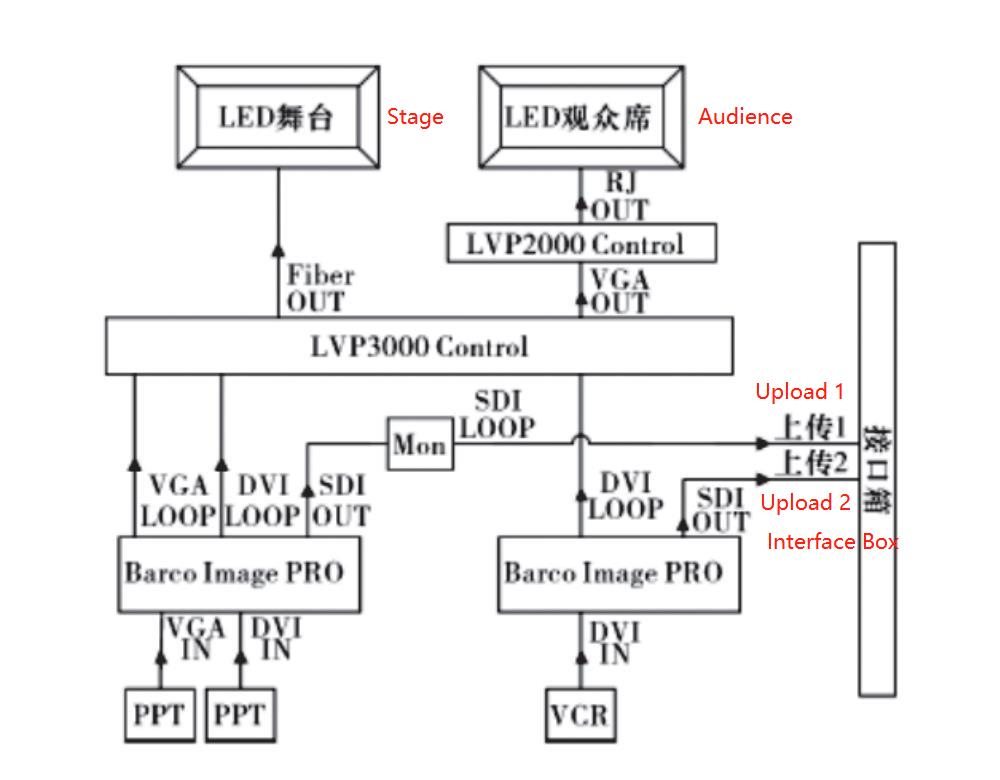
(2) The Application Of LED Display In The Variety Show
Unlike speech contests, LED displays on stage and LED displays in the audience show different sources of signals in variety shows.
The on-stage display is usually used to show the background animation and VCR of the program, while the LED display in the audience is used to provide cue information for the program team, without the need for the guide to record switching. Therefore, during the recording of a variety show, the purpose of the LED display on stage is to provide a supplement to the program, playing the appropriate screen according to the content and style of the program.
The staff in charge of the LED display control can follow the flow of the program to play the animation. The purpose of the audience display is to provide support for the live program host. The specific wiring connections are shown in Figure 2.
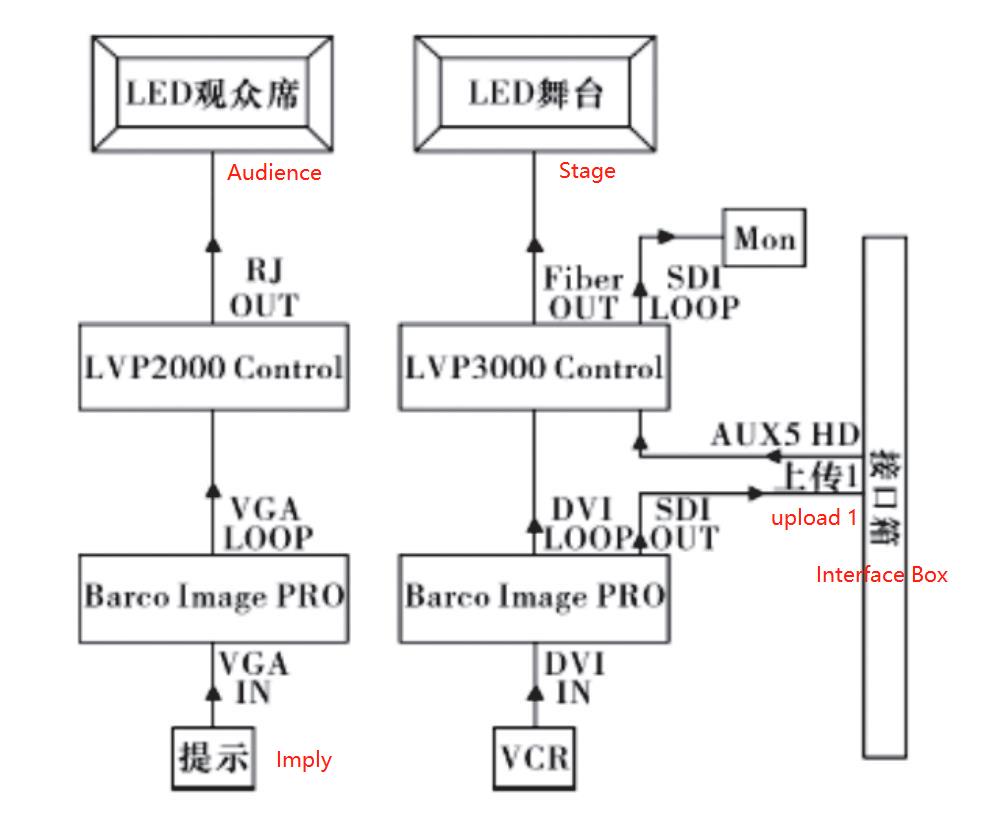
(3) The Application Of LED Display In The Learning Competition Type Programs
LED displays in learning competition programs are characterized by the display of the corresponding questions and answers for the contestants, so they must have a flexible switching function. In the process of connecting the lines, the two-way switch is connected to the LED display system with the help of a converter, and then the staff switches the display screen according to the actual program flow. In learning competition programs, the LED screens on the stage display the same content as the LED screens in the audience.
It should be noted that the HDMI signal directly transferred from many devices is 60p by default, and if the signal is directly connected to the display system, the switchboard equipment often cannot be recognized, so the signal must be converted to SDI signal with a converter and then used. The specific connection method is shown in Figure 3.
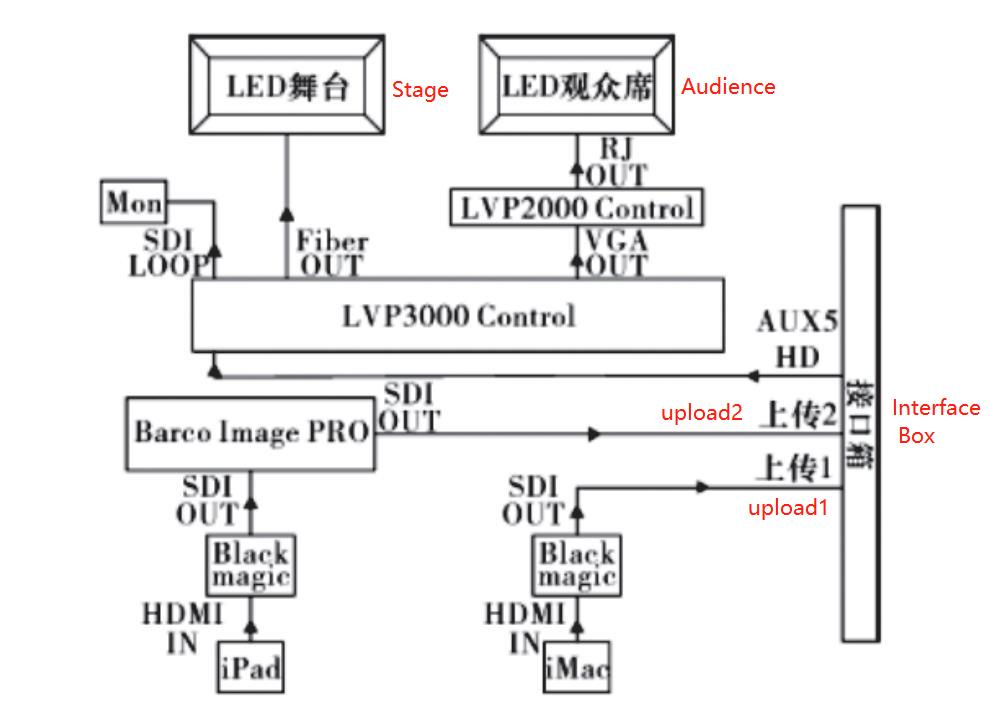
(4) The Application Of LED Display In News Programs
Generally speaking, there are two main applications for LED displays in news programs: one is to use LED displays as backgrounds, and the other is to use LED displays to display content. In the case of an LED display as background, it is often necessary to display only simple video and picture material, which can be transferred to the LED display by converting the signal from the computer with the help of Image PRO. If the content of a news program is to be displayed, it can be connected directly to the display system via the auxiliary output of the switchboard or through the DVI interface of the computer.
